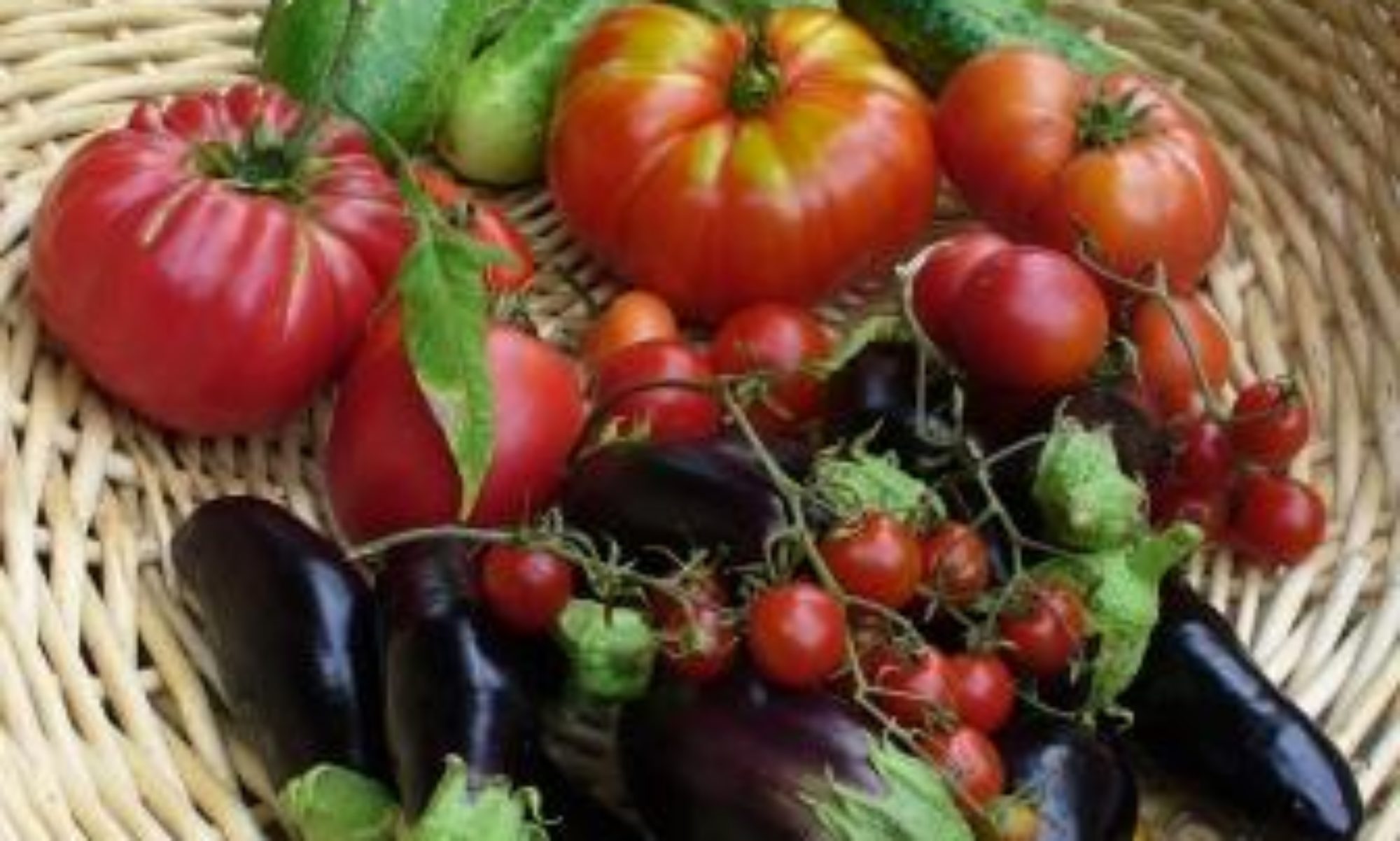
Our high tunnel is now fully planted with tomatoes, cucumbers and melons and plants are already sporting tiny fruit.
Fresh Sheet

- Fresh thyme, oregano, sage, or rosemary, $1/oz
- Sorrel, $10/lb
- Parsnips, $2/lb
- Carrots, $2/lb
Last updated – December 1, 2019
Subscribe to our e-mail list to receive copies of the Fresh List whenever it is updated.
Oh no...This form doesn't exist. Head back to the manage forms page and select a different form.High Tunnel Tomatoes
Our high tunnel is now fully planted with tomatoes, as well as a few cucumber and melon plants. We are growing 110 tomato varieties this year. Indeterminate varieties are trained to strings in the center two rows. Determinate varieties are constrained with a stake-and-weave system in the outer two rows.

Our potting soil
For the third consecutive year, I have compared commercial potting soils with our homemade potting soil for growth of tomato starts. Once again, our homemade potting soil is hugely better than midprice potting soils sold at Lowes and Home Depot and slightly better than premium expensive brands such as Miracle-Gro.
Here are two sister tomato seedlings, one month after they were transplanted on the same day into our homemade potting soil on the left, and the commercial ‘Brand X’ potting soil on the right.

So without further fanfare, here is our recipe –
- 5 gallons composted horse manure
- 4 gallons peat moss
- 1 gallon sand
- 2 quarts perlite
- 1 cup dolomite lime
- 1 cup bone meal
All ingredients are passed through a 1/2″ steel mesh screen and thoroughly mixed.
The final product is completely free of objectionable odor.
The key here is the quality of the composed horse manure, which we make ourselves. Our horses stalls are bedded with a 50/50 mix of fir sawdust and fir shaving. Good barn management with frequent stall cleaning means that the manure and urine-soaked shavings are collected without too much mixing with fresh shavings. The collected manure is turned multiple times during the first 3 months of composting and then is stored for an additional 2 years before use. The heat generated by composting, combined with the lengthy “aging” guarantees that the compost is virtually free of viable weed seeds (not to mention bacterial pathogens).
Some technical notes: composted manure is mildly acidic and peat moss is highly acidic, hence the addition of lime. The recipe yields a final pH of roughly 6. Various sources list the N/P/K content of composted horse manure at values ranging from 0.3/0.2/0.5 to .7/.2/.7. The usual ratios recommended for growth of most plants range from 1/1/1 to 1/2/1 so achieving a suitable balance in the potting soil requires supplementation with phosphate, hence the addition of bone meal. The recipe I use achieves a final NPK content of roughly .2/.15/.3. For comparison, Miracle-Gro potting soil is 0.21/.011/0.16 so arguably my potting soil is substantially richer in phosphorous. On the other hand, all of the Miracle-Gro phosphorous is likely in the form of super-phosphate, which is fully available to plants, while only a small fraction of the phosphorous in bone meal is immediately available to plants as phosphate.
First Day at Snohomish Farmer’s Market
Our first day selling at the Snohomish Farmer’s Market was a big success. What were the odds for a cloudless day in early May?

Late snow does not make farmers happy
3″ of heavy wet snow is not helping our early crops, but most are protected by high tunnels, low tunnels or greenhouse.
Tomato plant mass production begins again

My goal is to produce 1000 plants – ten each of one hundred varieties.
Come see us at the Snohomish Farmer’s Market
High & Dry Farm will be selling this year most Thursday afternoons at the Snohomish Farmer’s Market.
Here is our calendar.
Transitioning to winter

I have removed the last of the tomato plants from the high tunnel and begun replacing them with lettuce and spinach transplants. The high tunnel has performed beautifully in its first summer season.
High Tunnel Tamaters
As usual, the tomato plants in the garden have all fallen to late blight, but the tomato plants in the high tunnel greenhouse are still thriving. Here are some of our heirloom beauties.

